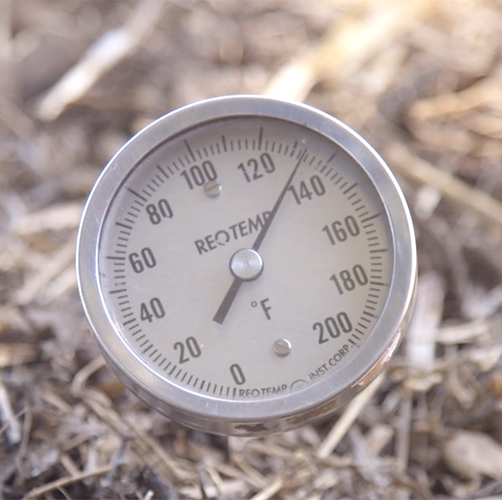Materials
- Compost pile or row
- Three small piles of greens, browns, and food scraps
- Compost Cake Visual Aid with ingredient cards, elements, and file folder
- Fungus, bacteria, invertebrates (FBI) images
- Thermometer
- Bucket of sifted finished compost
- Rotting apple
- Prompt for Closing Circle activity
- Decomposition definition





